What do we think about crime? How safe do we feel? Do our habits reflect how safe we feel? We hoped to answer some of these questions through our recent survey on security habits.
After retrieving and analyzing the survey data, we were able to uncover some interesting statistics. Although we must be careful not to draw any hasty conclusions with our results, we think you’ll find the results to be fascinating.
1. 50% of respondents indicated that the national rate of crime is continuing to rise, even though national statistics indicate otherwise.
According to the Christian Science Monitor, the U.S. crime rate has slowly declined over the past three decades. However, despite this glaring fact, most people still believe that the crime rate is rising. Our survey participants mirrored this phenomenon in their responses.
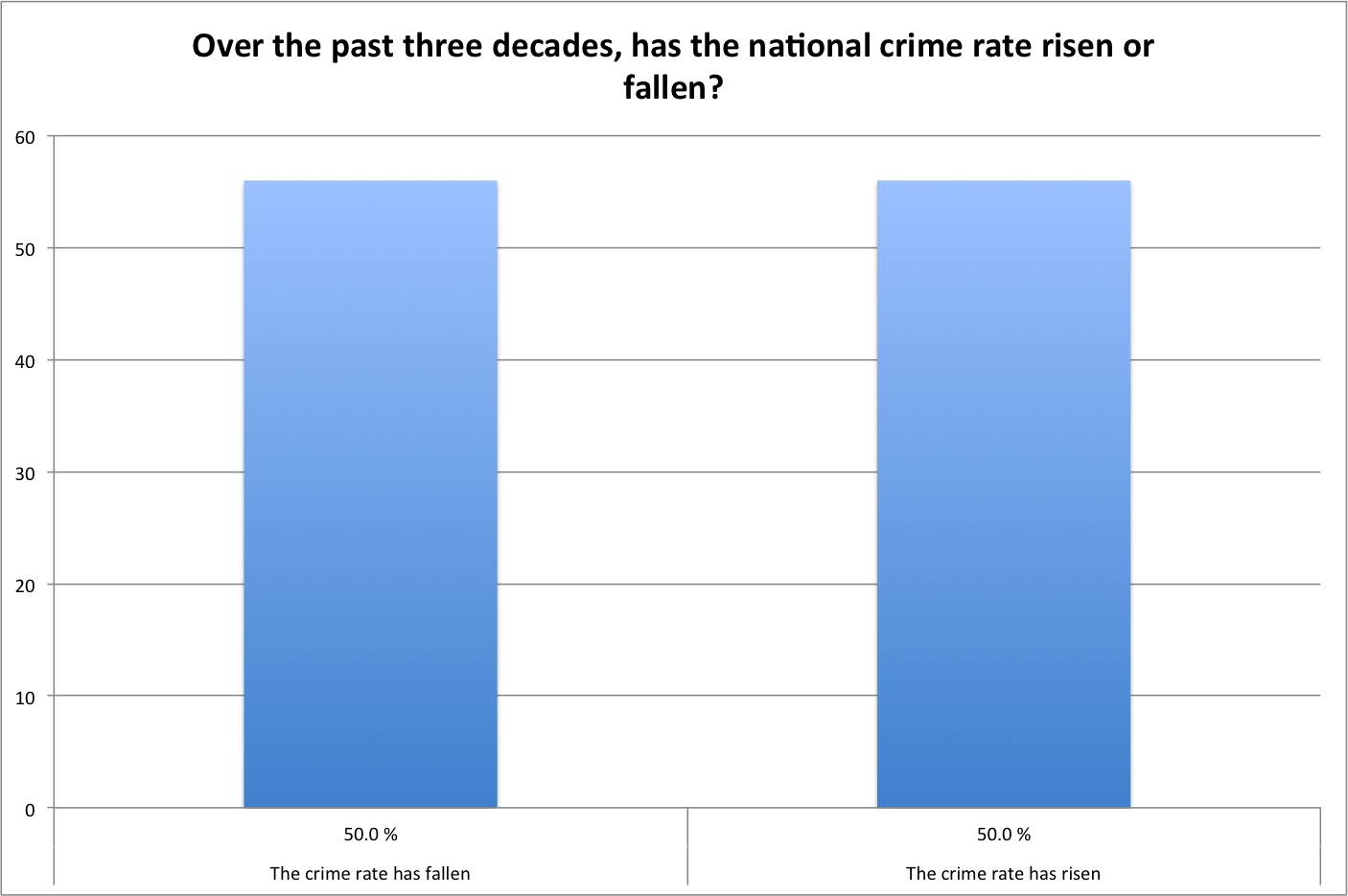
The reason for this discrepancy isn’t well understood, but scholars have speculated as to why the public continues to fear crime despite its decline. Specifically, mass communication researchers George Gerbner and Larry Gross developed an academic theory called Cultivation Theory, which posits that continuous media coverage of crime and violence has the power to alter the public’s perception of safety for the worse. In fact, they even coined the term “mean world syndrome” to describe the feelings of fright and distrust caused by portrayal of crime and violence on TV.
Several studies have been conducted to test the efficacy of Cultivation Theory, the most notable of which showed a positive correlation between attention payed to local crime reporting and feelings of fear in viewers.
2. Door locking is on the rise.
We’ve all heard of the small, rural towns where everyone is considered trustworthy and nobody ever locks their doors. But our results indicate that those havens of trust are slowly fading away.
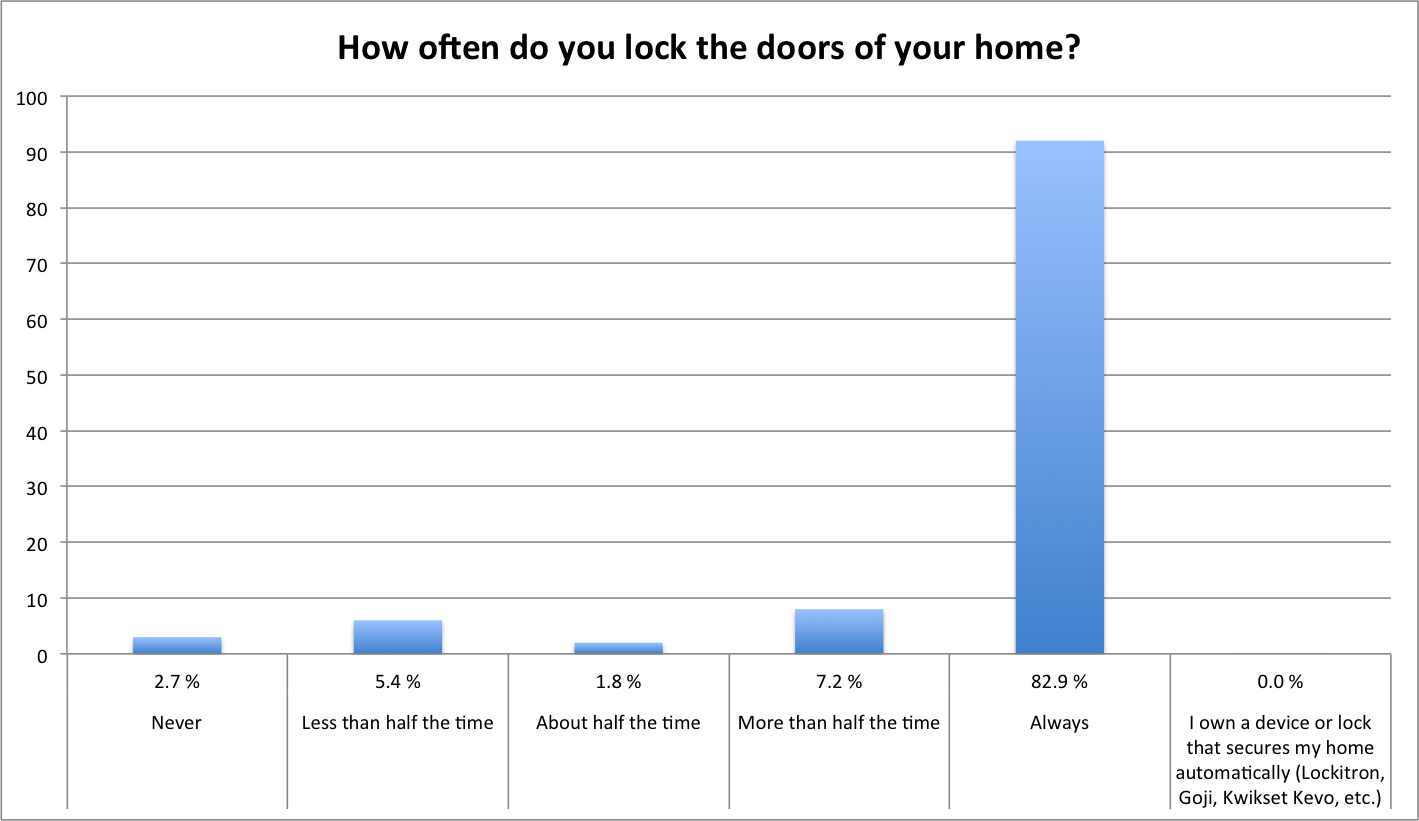
Respondents indicated that they feel quite safe at home and at work, but they lock their doors religiously.
3. Very few respondents indicated use of an automated home security system.
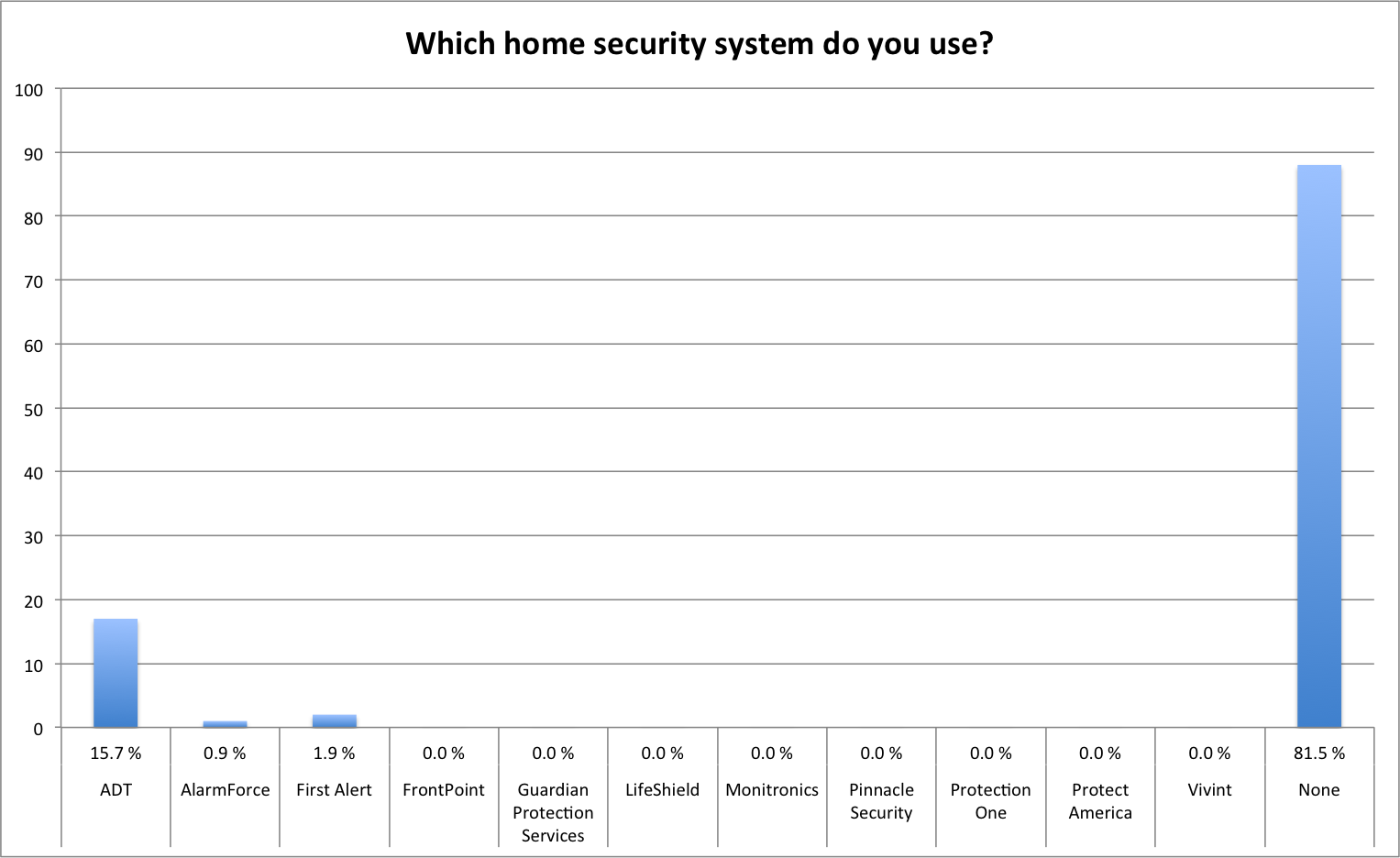
Although most respondents indicated that they lock their home and car doors regularly, very few indicated the use of a home security system. This seems to indicate a threshold where the thoroughness of home security habits begin to taper off – most people are willing to invest the time and effort to lock their doors, but not to install a security system.
4. Over 1/2 of respondents do not secure their valuables in a safe or lock box, and over 1/3 of gun owners surveyed do not own a safe or lock box.
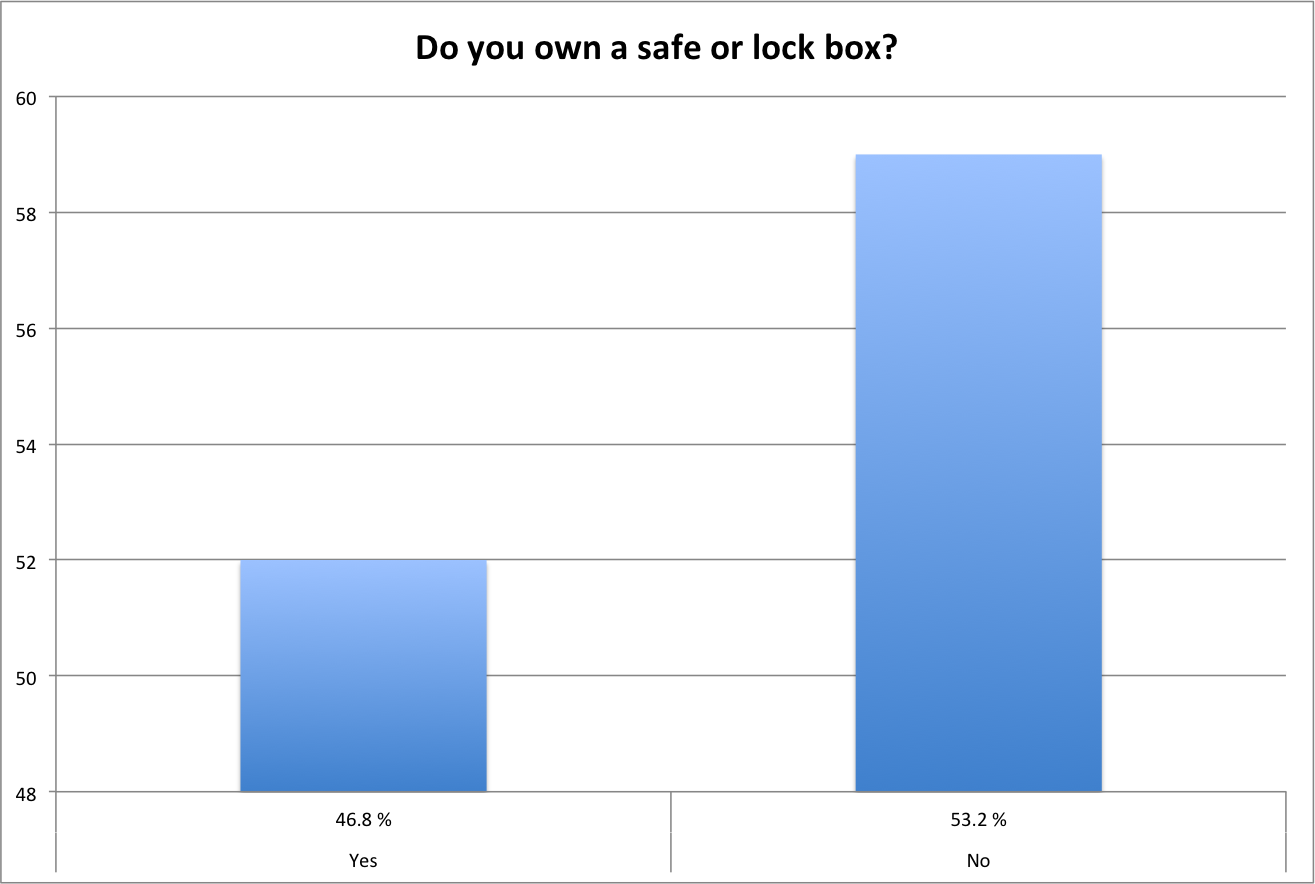
Although most individuals have valuables, sensitive documents, or firearms that need to be locked away, it seems that many of them aren’t worried about keeping them out of the wrong hands. Roughly 45% of our entire sample group answered “yes” to owning a safe or lock box, meaning over half of individuals surveyed are leaving their possessions unsecured.
What’s more, 35% of the gun owners in our sample group indicated that they do not own a safe or lock box. This leads us to believe that they may be leaving their firearms out in the open, accessible to intruders and family members. Granted, there are other ways of securing a firearm, such as an individual gun lock, which these respondents could be using. However, nothing is safer than fully enclosing your firearm in a safe or lock box.
5. On the whole, respondents’ expectations for 911 response times almost exactly match the national average.
According to the Wall Street Journal, the national average 911 response time, as of 2013, was around 11 minutes. Considering the typical discrepancy between public perception and reality, we anticipated respondents to answer either much lower or higher when asked about what they believe the national average 911 response time to be.
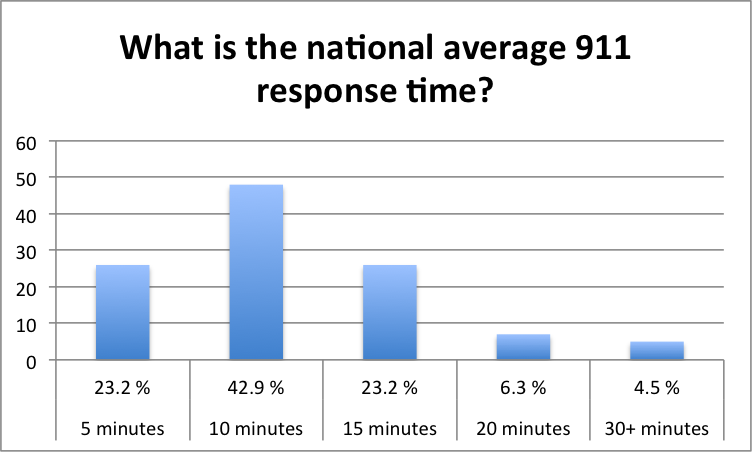
We were shocked once again when we found that over 40% of our respondents indicated expectations of a 10-minute national 911 response time.
Survey Notes
Data was collected from 112 US consumers via an online survey created by Survey Monkey and administered through Amazon Mechanical Turk. The survey was conducted with a confidence level of 95% and a 10% margin of error. Survey participants were compensated for completing the survey, and a platform with a broad demographic user base was used to reduce self-selection bias (In simple terms, survey respondents represented a diverse group of individuals). To maintain data integrity, the sponsoring company and survey purpose were not disclosed to respondents.
Read more at phoenixlockmaster.com/blog.

 We serve the entire Phoenix area, including
We serve the entire Phoenix area, including  We accept Cash, Checks and Major Credit Cards.
We accept Cash, Checks and Major Credit Cards.